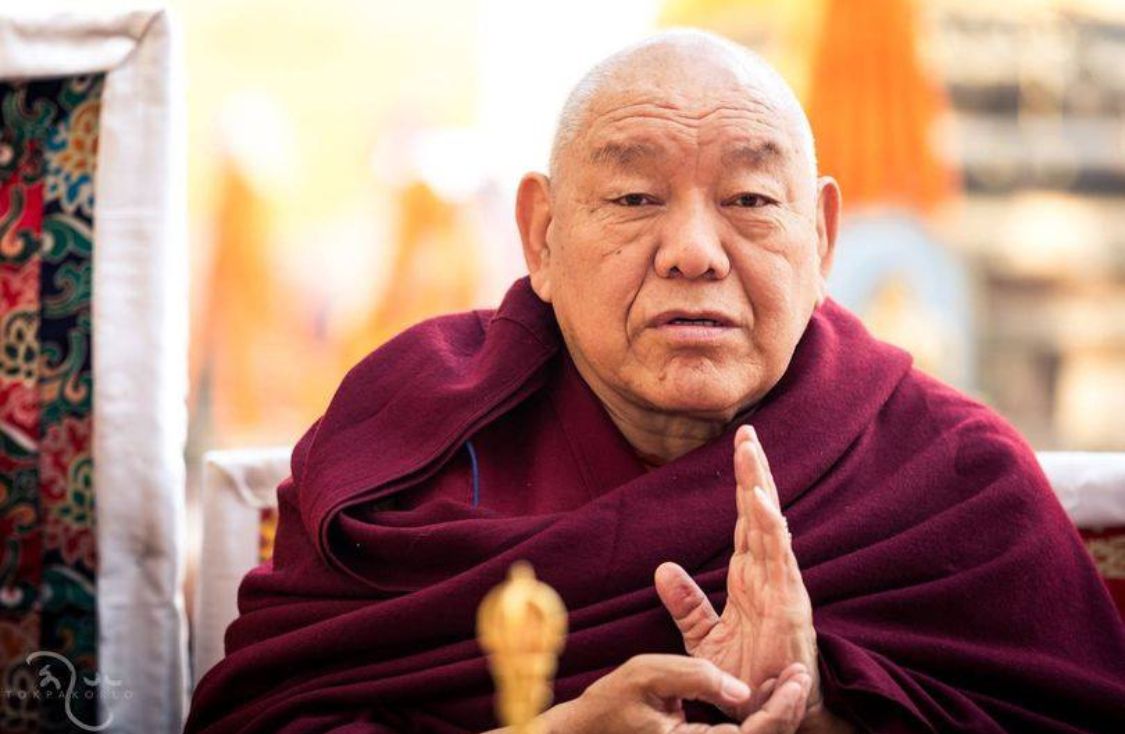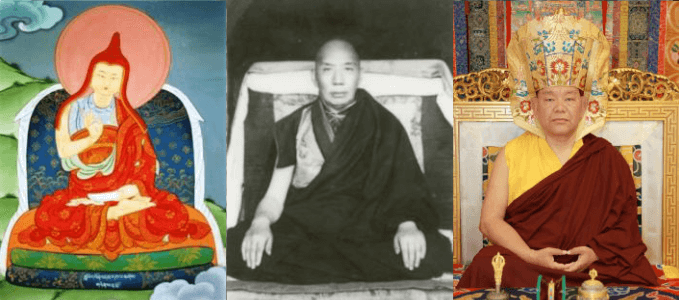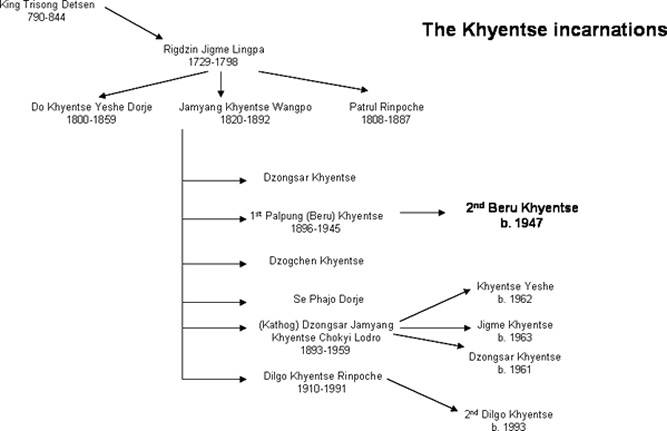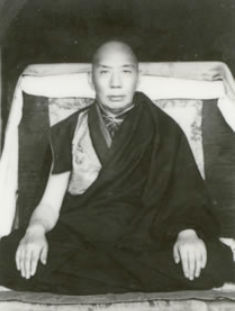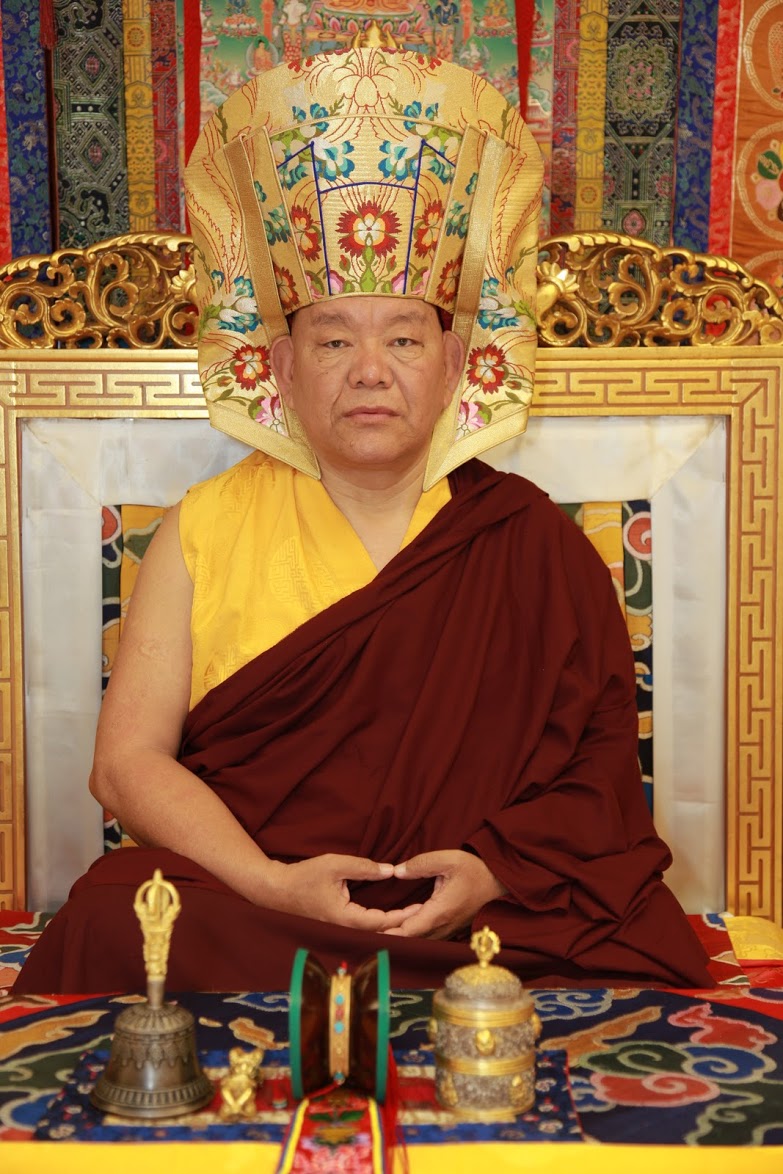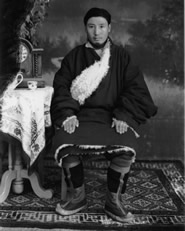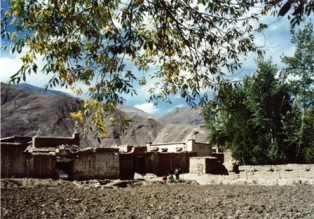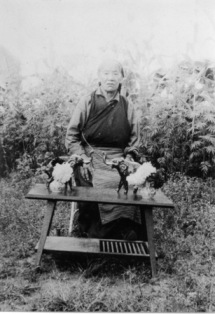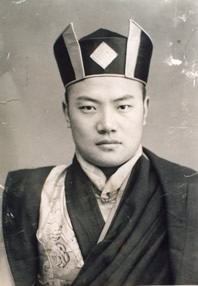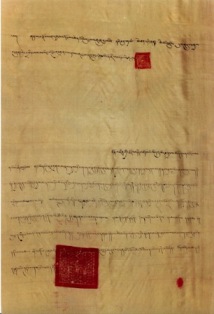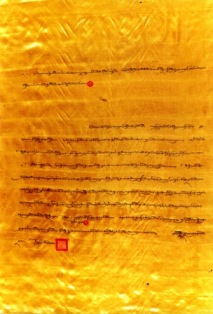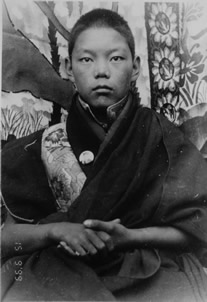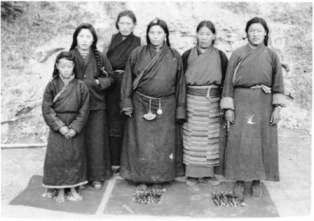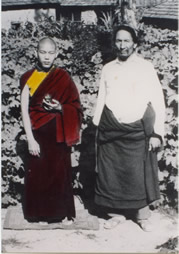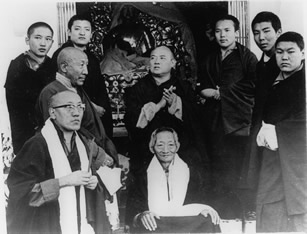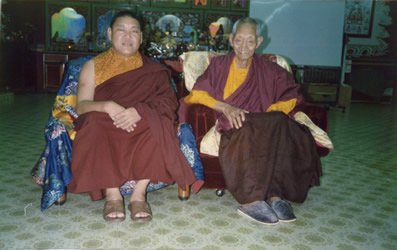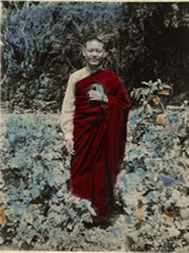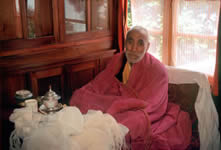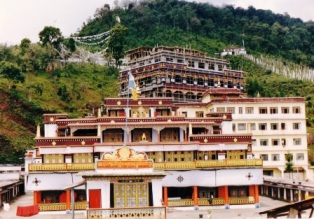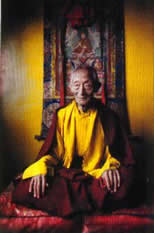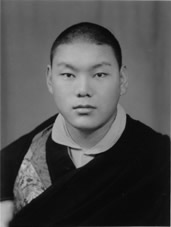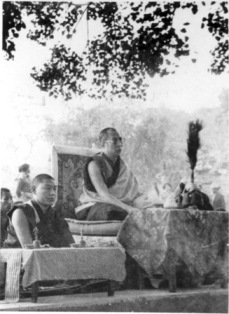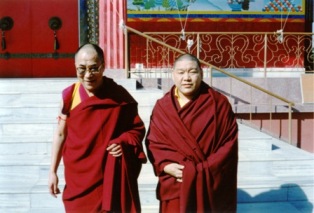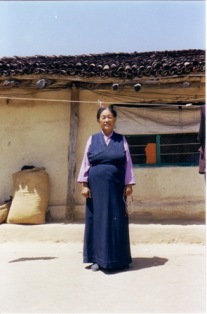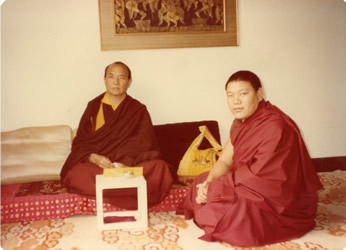Beru Khyentse Chökyi Wangpo Rinpoche – the third incarnation and mind emanation of Jamyang Khyentse Wangpo, the current Palpung Beru Khyentse, also known as Drongsar Khyentse Chökyi Wangpo – was born in 1947 (on the fifteenth day of the sixth lunar month) in Central Tibet, in the Nyethang region, 25 kilometers west of Lhasa.
In 1955, His Holiness the Gyalwa Karmapa, Rangjung Rigpe Dorje, through his clairvoyance, prophesied that this child was the true incarnation and mind emanation of Jamyang Khyentse Wangpo. In the case of this bodhisattva, the circumstances leading to the manifestation of Dharma activity were as follows: the primary causes for the manifestation of the Dharma activity of the third incarnation of Jamyang Khyentse Chökyi Wangpo were the prayers, pure devotion, and merit of samaya vows of two exceptional and close disciples of the Karmapa.
Due to his unparalleled devotion and pure samaya, and his courage in religious and political matters, he was born into the royal family of Nangchen, famous for its glory across the land, as one of the four main ministers bearing the title “Behu” from the Drongsar family.
Both Drongsar Behu Drakpa Namgyal and his younger brother, Drongsar Behu Namkha Dorje, requested His Holiness the Gyalwa Karmapa to send a high-ranking Kagyu lama capable of guiding innocent beings and leading the Dharma seat of their newly constructed monastery.
The Karmapa joyfully accepted their request and wrote a recognition letter that included every necessary detail for identifying the reincarnation. The letter stated that the child would be found as follows:
“On the snowy land of Central Tibet, directly westward, at a brisk pace two days’ journey from Curpu. The father’s name is Nga Gi Wangchuk Drowegön – Lord of Speech, Protector of Beings. The mother’s name is Arya Tara Chökyidron. The child, born in the Fire-Dog year, came into a noble spiritual family and manifested special signs. He is without a doubt the incarnation of Khyentse Wangpo.”
These were the exact words contained in the recognition letter.

